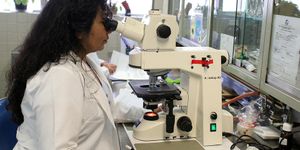What's all this about a "massless" battery?
Could a massless battery be possible? How could a device without mass store energy? If it were possible, what would that mean for the advancement of electric vehicles?
These are the questions that inspired researchers from Chalmers University of Technology in their most recent work. The new study, published in the journal Advanced Energy & Sustainability Research, builds on years of trials and discoveries from previous experiments lead by Chalmers researchers. One such previous study, named as one of 2018’s ten most significant scientific discoveries, involved the discovery of specific carbon fibers that store electrical energy chemically.
But, back to the elusive massless battery. How can a battery actually be massless, you ask? While technically a misnomer, the structural battery that the team has developed is termed massless because its function is not only for energy storage, but it also plays a part in the structure of the object (in this case, a car). In other words, instead of adding significant weight to the car and only playing one role (energy storage), the structural battery has multiple functions, including playing a role in the structure of the car body.
The Chalmers researchers worked KTH Royal Institute of Technology in Stockholm to develop a structural battery that is the most advanced to date for properties such as electrical energy storage, stiffness and strength. Additionally, the team reports, its multifunctional performance is ten times that of conventional prototypes.
How did they do it? Remember those carbon fibers discovered back in 2018? They played a key role in developing this advanced structural battery.
"Previous attempts to make structural batteries have resulted in cells with either good mechanical properties, or good electrical properties. But here, using carbon fiber, we have succeeded in designing a structural battery with both competitive energy storage capacity and rigidity," explains project leader Leif Asp, who is a professor at Chalmers.
The battery they designed demonstrates an energy density of 24 Wh/kg, equivalent to about 20% capacity of the lithium-ion batteries that are used on the market. Though 20% doesn’t sound that competitive, the researchers say that the decreased weight of a vehicle (due to the massless-ness of the battery) will mean less energy will be needed to drive an electric car.
"The next generation structural battery has fantastic potential. If you look at consumer technology, it could be quite possible within a few years to manufacture smartphones, laptops or electric bicycles that weigh half as much as today and are much more compact", says Leif Asp. "We are really only limited by our imaginations here. We have received a lot of attention from many different types of companies in connection with the publication of our scientific articles in the field. There is understandably a great amount of interest in these lightweight, multifunctional materials.”
Sources: Advanced Energy & Sustainability Research, Eureka Alert








